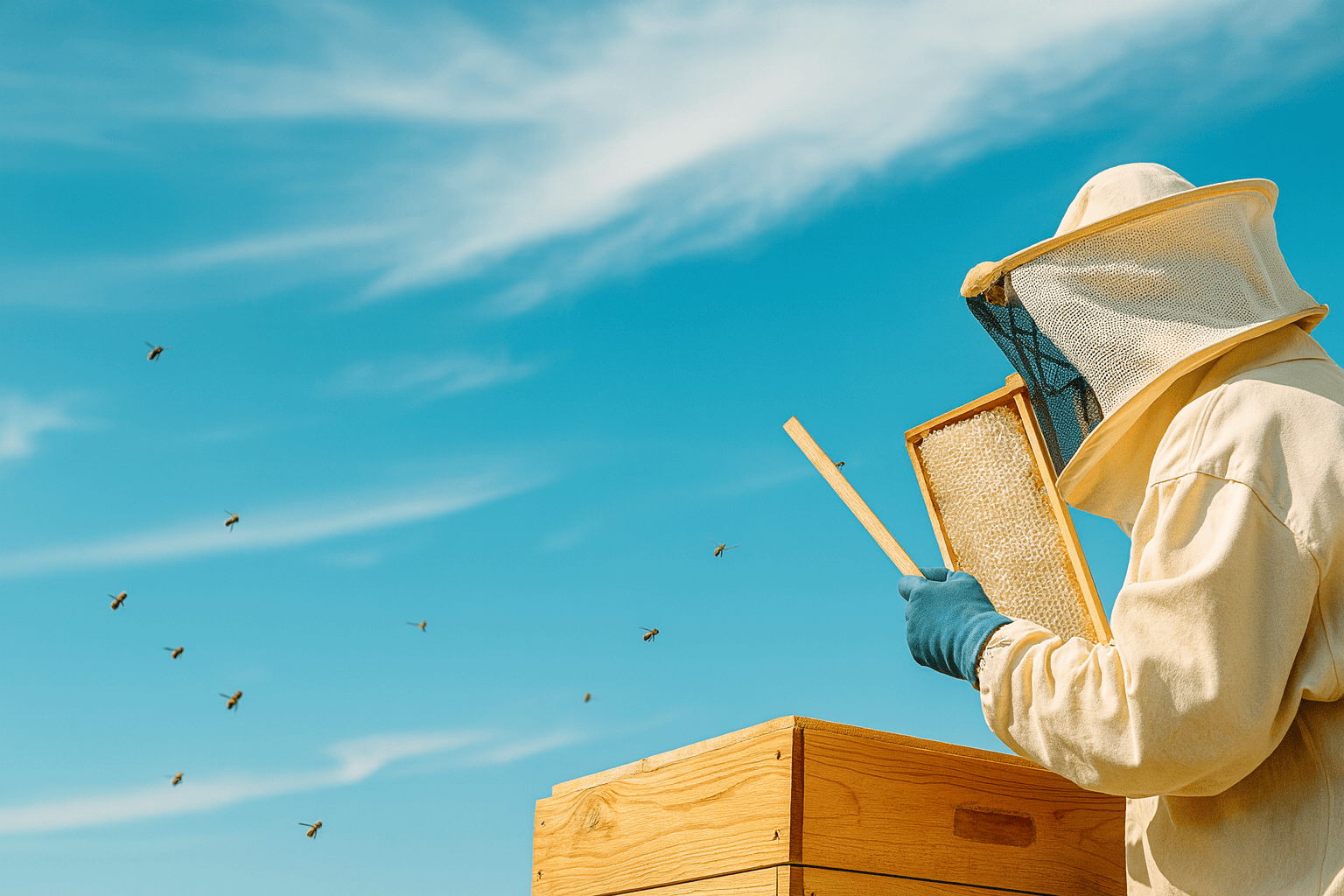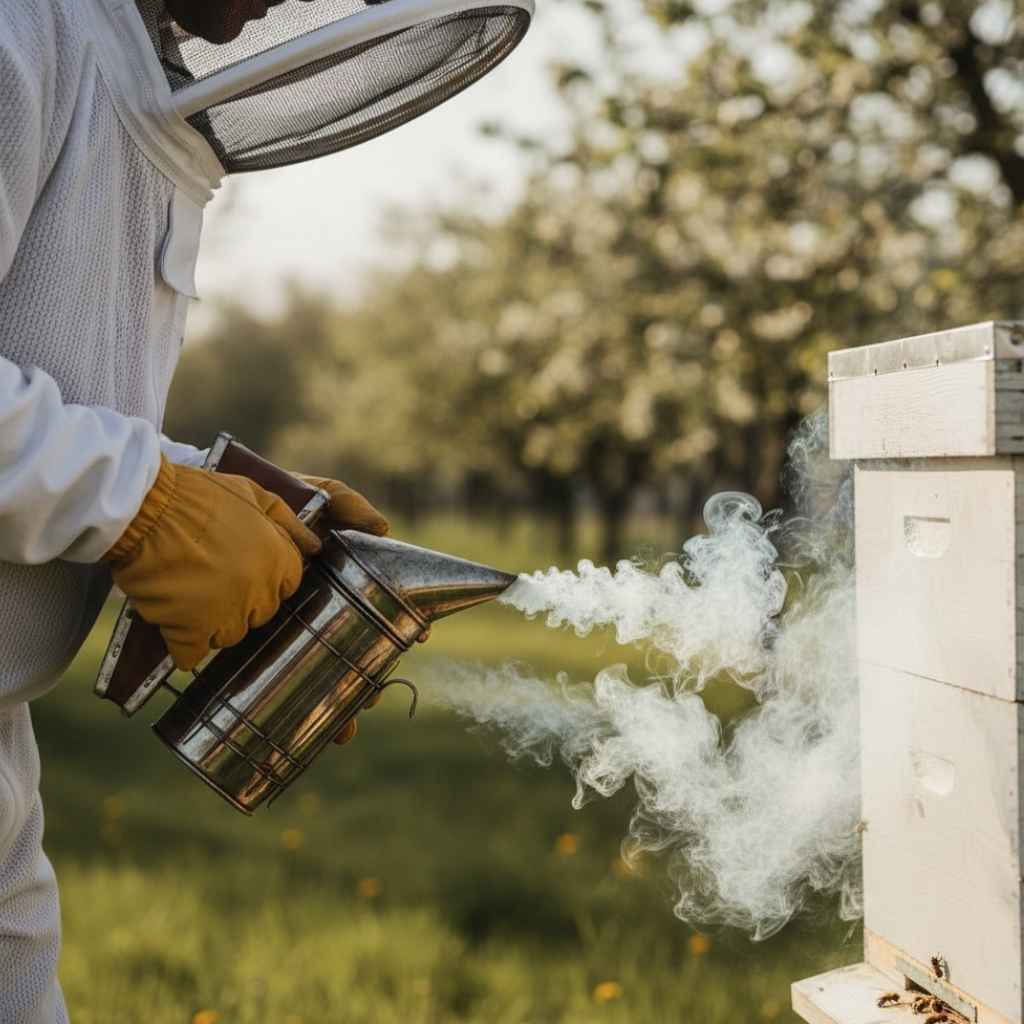
Beekeeping Guide
How to Avoid Bee Stings (as Much as Possible): Gear, Timing & Technique
You can’t guarantee zero stings, but you can reduce them dramatically. Use the right gear, pick the right moment, and handle frames calmly. This guide shows you how—step by step.
TL;DR — Quick Checklist
- Suit up right: ventilated suit, reinforced veil, snug elastics; gloves overlap sleeves.
- Fit: slightly loose so fabric stays off skin.
- Timing: warm, calm, sunny hours during a nectar flow.
- Smoke: cool, white puffs (2–3) at entrance and under lid; wait 30–60s.
- Move smoothly: avoid the flight path; steady frames; don’t crush bees.
- No strong scents: skip perfume/banana-like smells; keep gear clean.
- If pinged at the veil: step back, a light puff, and reset.
Safety note: Protective gear reduces—but can’t eliminate—sting risk. Seek medical help for any severe reaction.
1) Suiting Up (Your Biggest Win)
- Choose a ventilated suit with tight-weave fabric, reinforced veil, and YKK® zippers.
- Ensure overlaps at wrists/ankles and glove cuffs; engage thumb loops; seat the veil ring fully.
- Fit tip: allow 1–2 in (3–5 cm) of ease at the chest. Looser fabric = better airflow and fewer through-fabric contacts.
- Check for gaps where zippers meet and around elastic seals before opening the hive.
2) Best Timing & Weather
- Work late morning to mid-afternoon on warm, calm, sunny days.
- Avoid high wind, storm build-ups, and heavy dearth (bees are more defensive when hungry).
- Keep inspections shorter during poor forage or cool snaps.
3) Smoker Use (Calm, Not Clouds)

- Use dry, clean fuel (pine needles, burlap, wood pellets) for cool white smoke.
- Give 2–3 puffs at the entrance and one under the inner cover; pause 30–60s.
- Re-smoke lightly if tone rises (pitchy buzz or guards lining top bars).
4) Hive Handling Habits
- Approach from the side or back, not the flight path.
- Keep frames vertical and steady; don’t crush bees when replacing frames.
- Use a light brush or small smoke puff instead of sweeping hands.
- If the veil gets head-butts, step back, breathe, and reset.
5) Scents, Colors & Cleanliness
- Skip perfume, strong deodorant, hair products, and fruity gums (banana-like scent can cue alarm).
- Wash suits and especially gloves regularly to remove alarm odor and propolis.
- Light colors and smooth fabrics generally provoke less attention than dark/fuzzy ones.
6) Aftercare & What to Do If You’re Stung
- Remove the stinger quickly by scraping with a card edge—don’t pinch the sac.
- Wash, then apply a cold compress. An OTC antihistamine can help swelling (follow label).
- Watch for signs of allergy (hives beyond the site, dizziness, breathing issues) and seek emergency care. Carry an epinephrine auto-injector if prescribed.
Sizing Help
A slightly looser fit improves airflow and mobility. Measure height and chest, then pick the size that fits both—if in doubt, size up.
FAQ
- Do ventilated suits stop all stings?
- No suit can promise zero stings, but a tight weave, correct fit, and calm handling reduce stings significantly.
- Leather or nitrile gloves?
- Leather offers more protection; nitrile improves dexterity but you’ll feel stings more. Choose based on task and experience.
- How much smoke is too much?
- Enough to change the colony’s tone, not drench them. Over-smoking can stress bees and drive them off frames.